
1968 Höfner 500/1 Bass
The action is sky high, it won’t play in tune and the neck is coming off. But don’t get your violins out just yet because this Höfner 500/1 will soon ‘get back’ up and running.
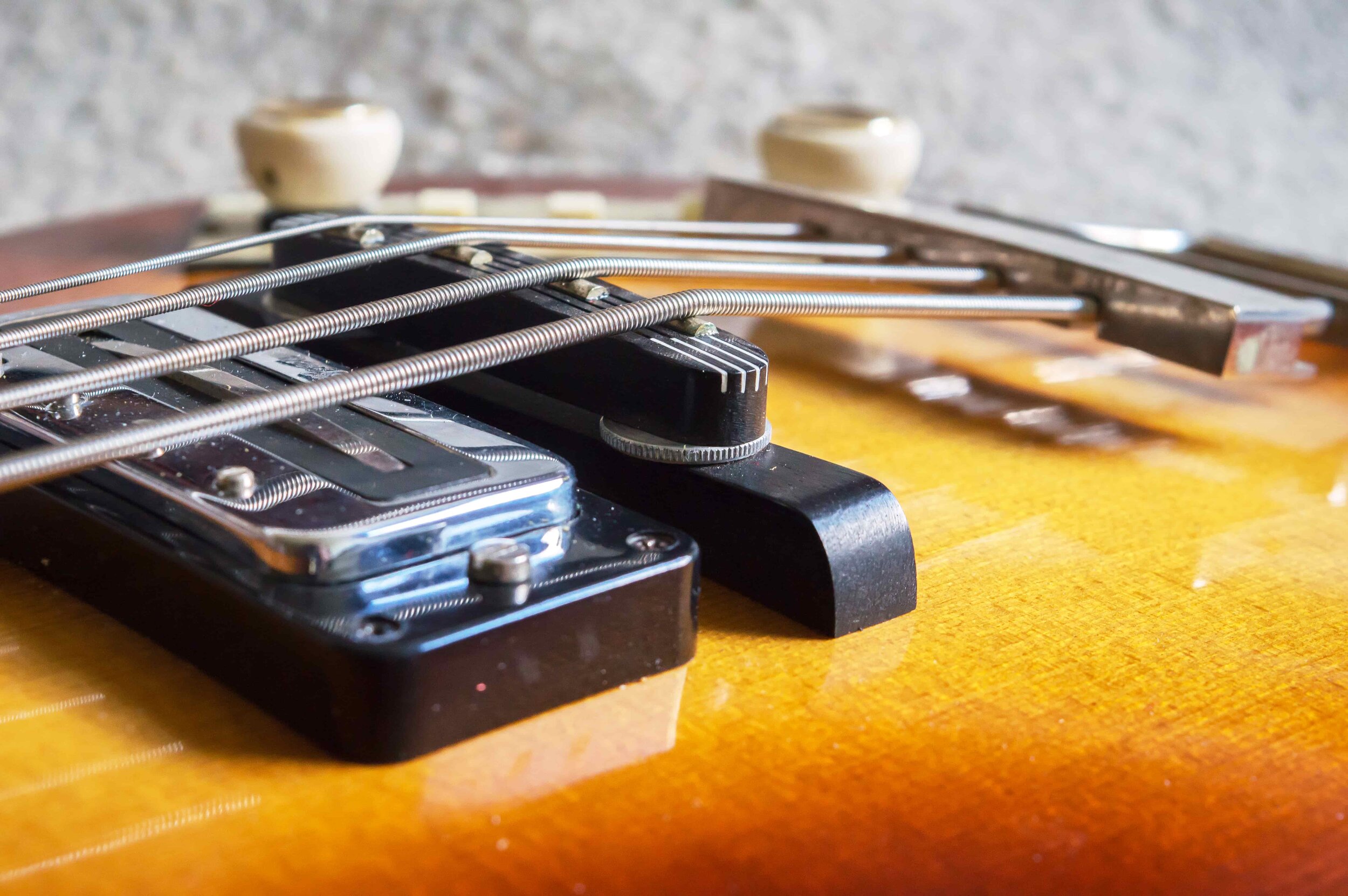
When a bridge is set as low as it can go but the action is too high, it’s a sign something is wrong.

A metal ruler running across the top of the frets hits the side of the bridge and there’s no doubt a neck reset is needed.
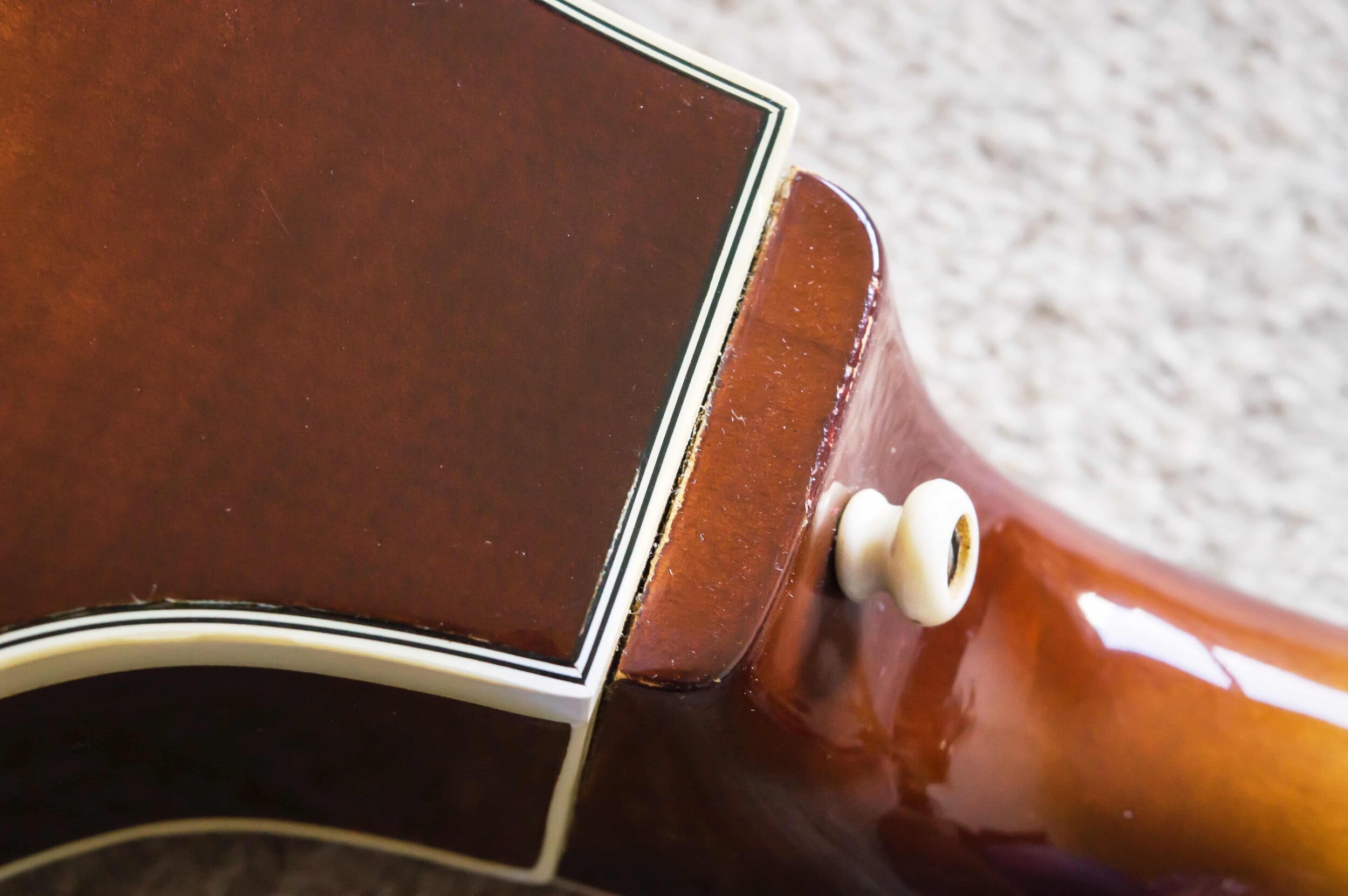
A gap between the heel and the body is another sign of trouble.
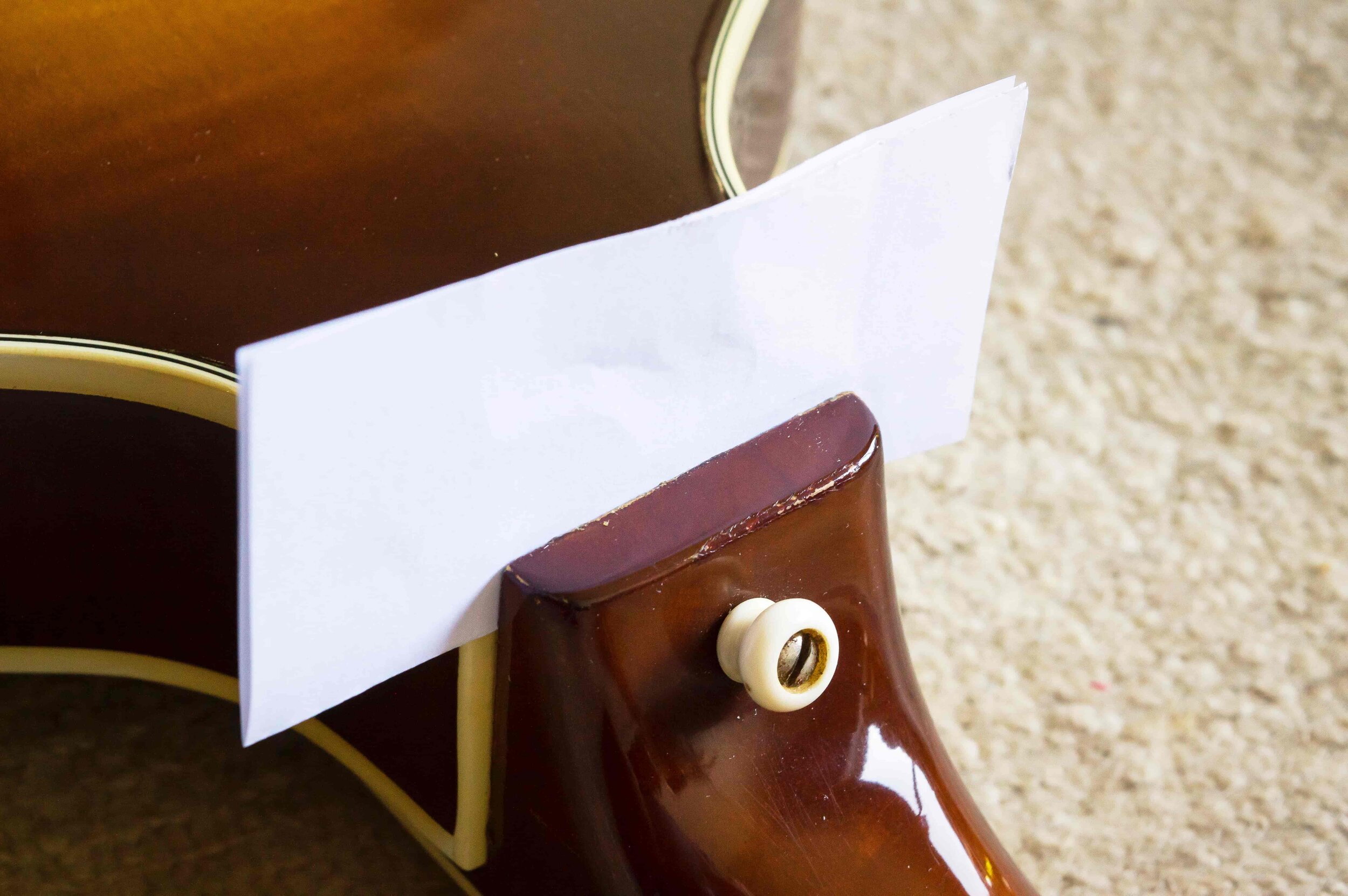
The gap is so wide a folded piece of printer paper pushes in easily.

The action is unacceptably high and the fretboard is pointing straight at the neck pickup.

Fret 17 is removed and holes are drilled for a needle to direct steam into the neck joint.
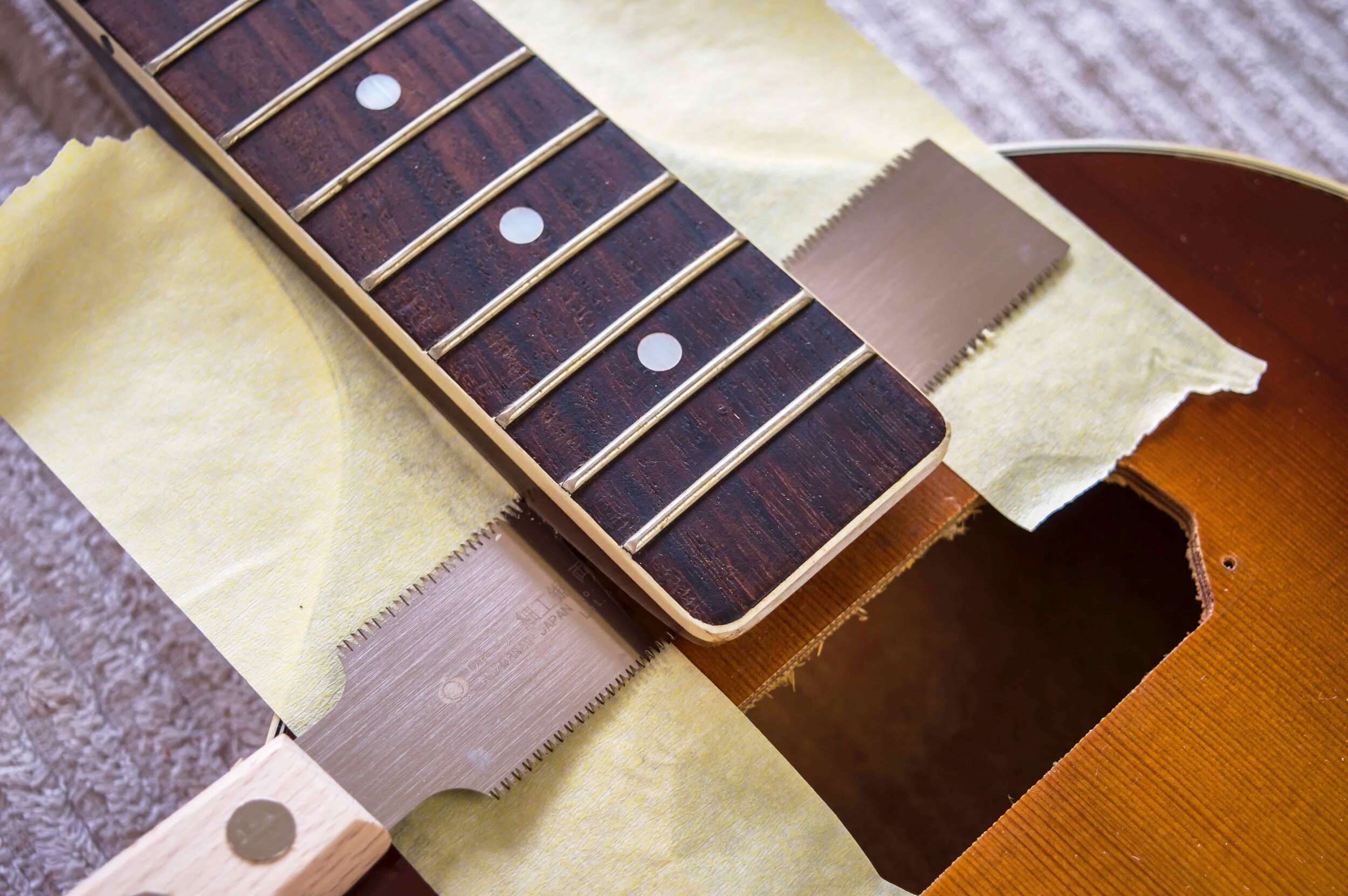
Masking tape protects the body and a flush cut saw is used to break through glue out under the fingerboard extension.

The steam needle alternates between the holes and any excess water is immediately wiped away.

Earlier Höfners had dovetail neck joints but later in the 1960s they moved to this style of mortice and tenon.

Teflon is placed in the fret slot to plug one side of a steam needle hole.
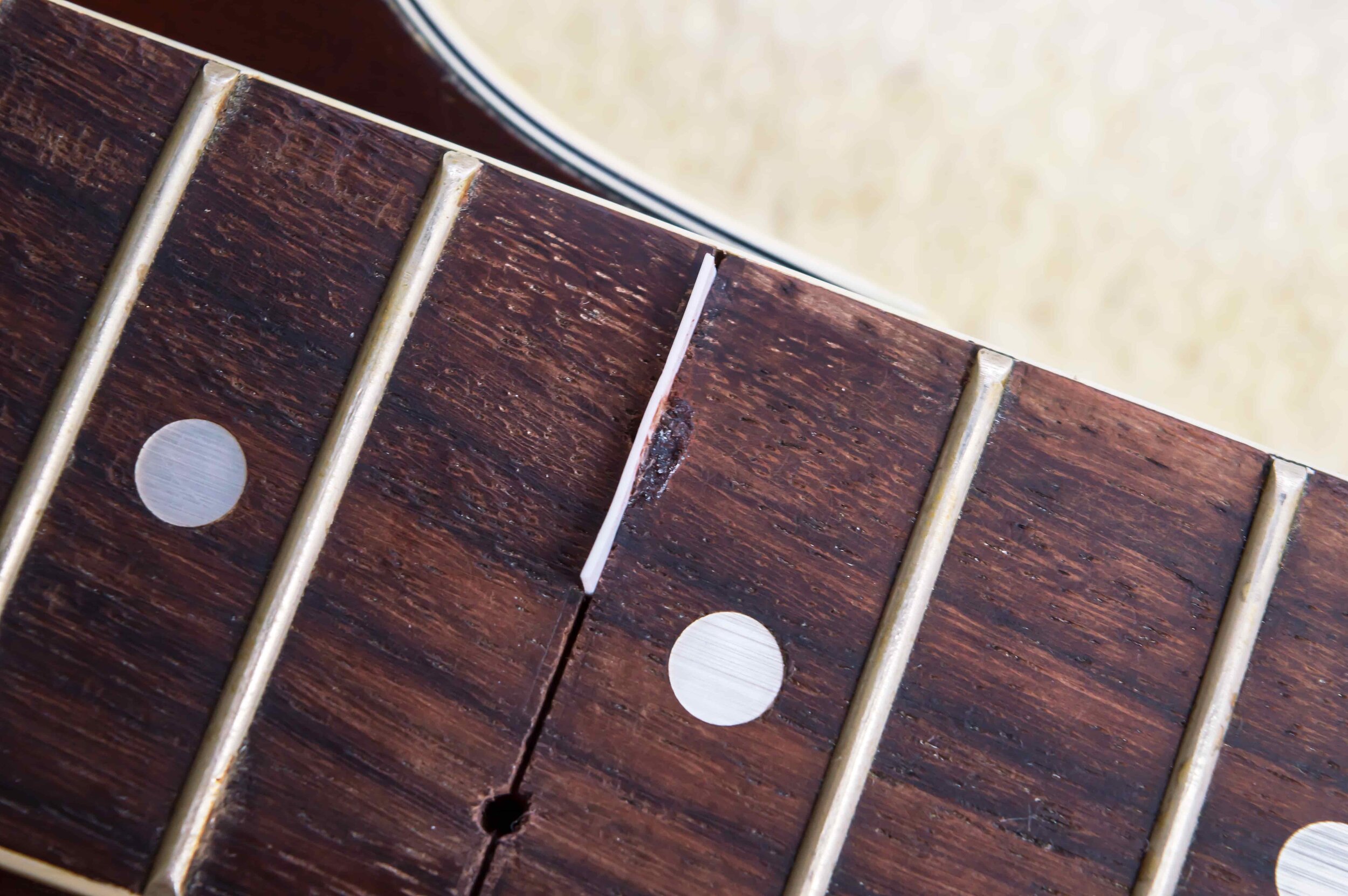
Rosewood dust and superglue is used to plug the hole and the Teflon keeps the slot clean.
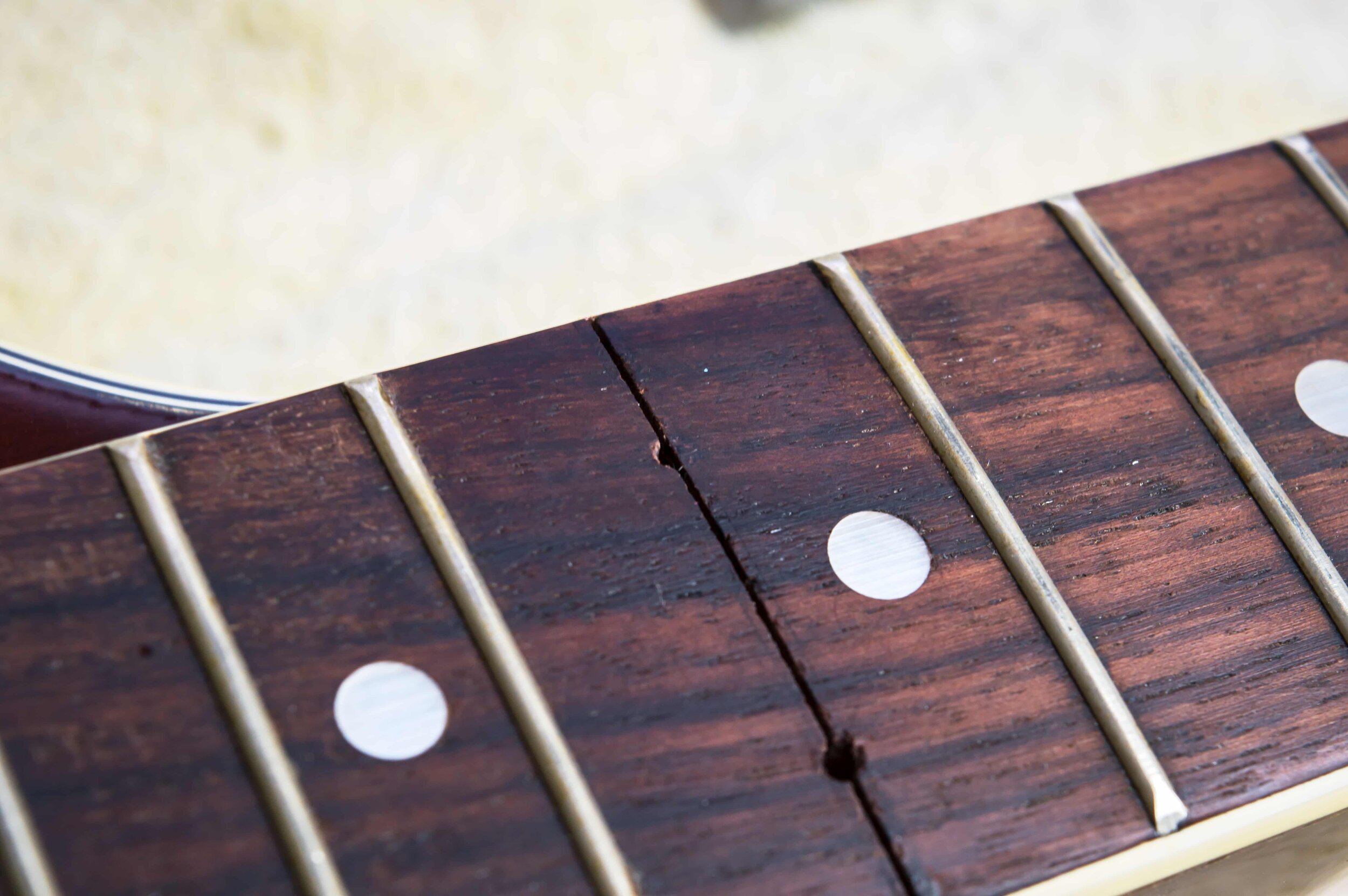
When sanded flush, the plugged hole becomes harder to spot.

The 17th fret is reinstalled with the treble side marking still visible, but the needle holes are now hidden under the wire.
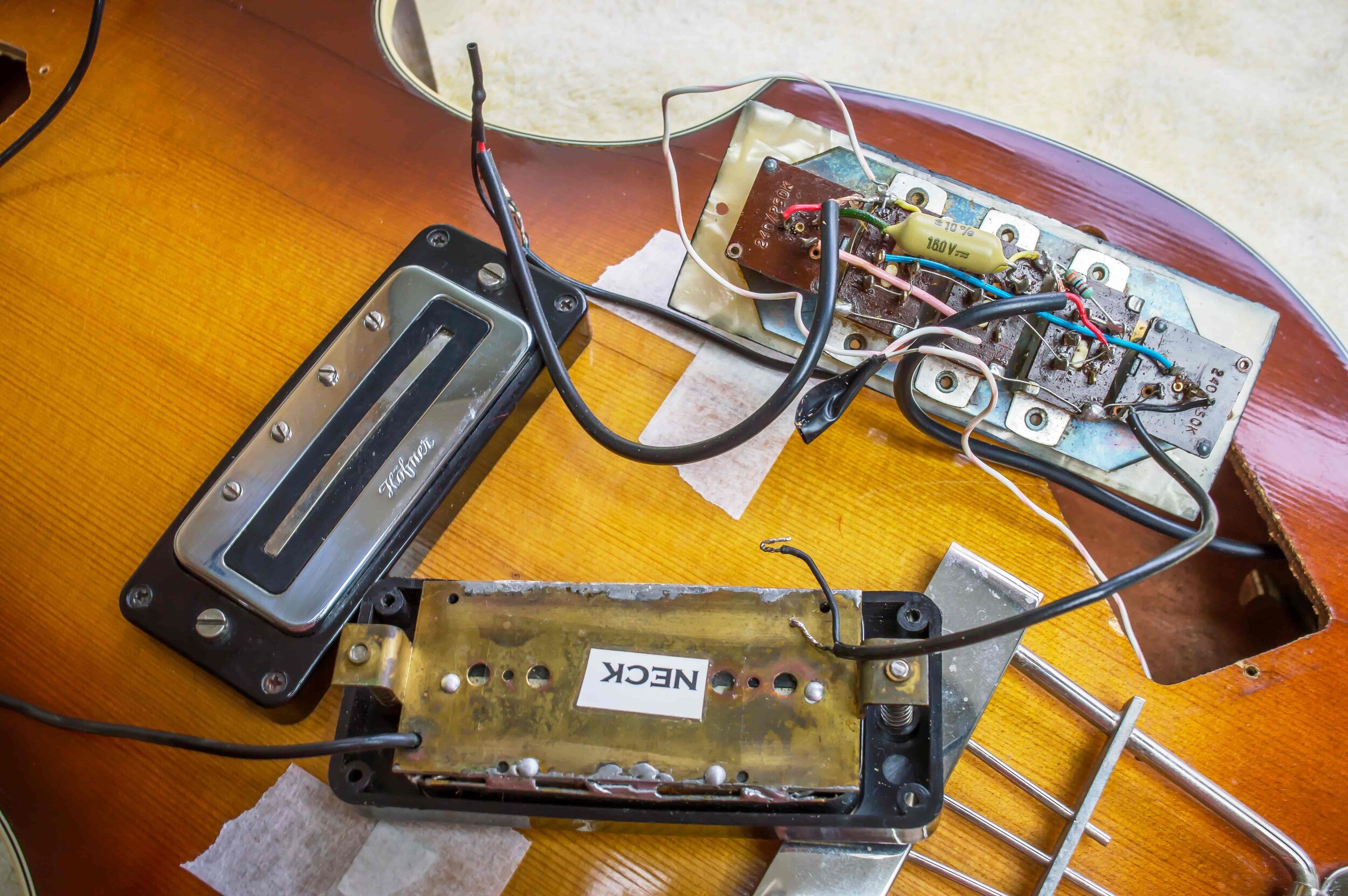
The wiring is a bit of a mess so this is an opportunity to tidy things up.
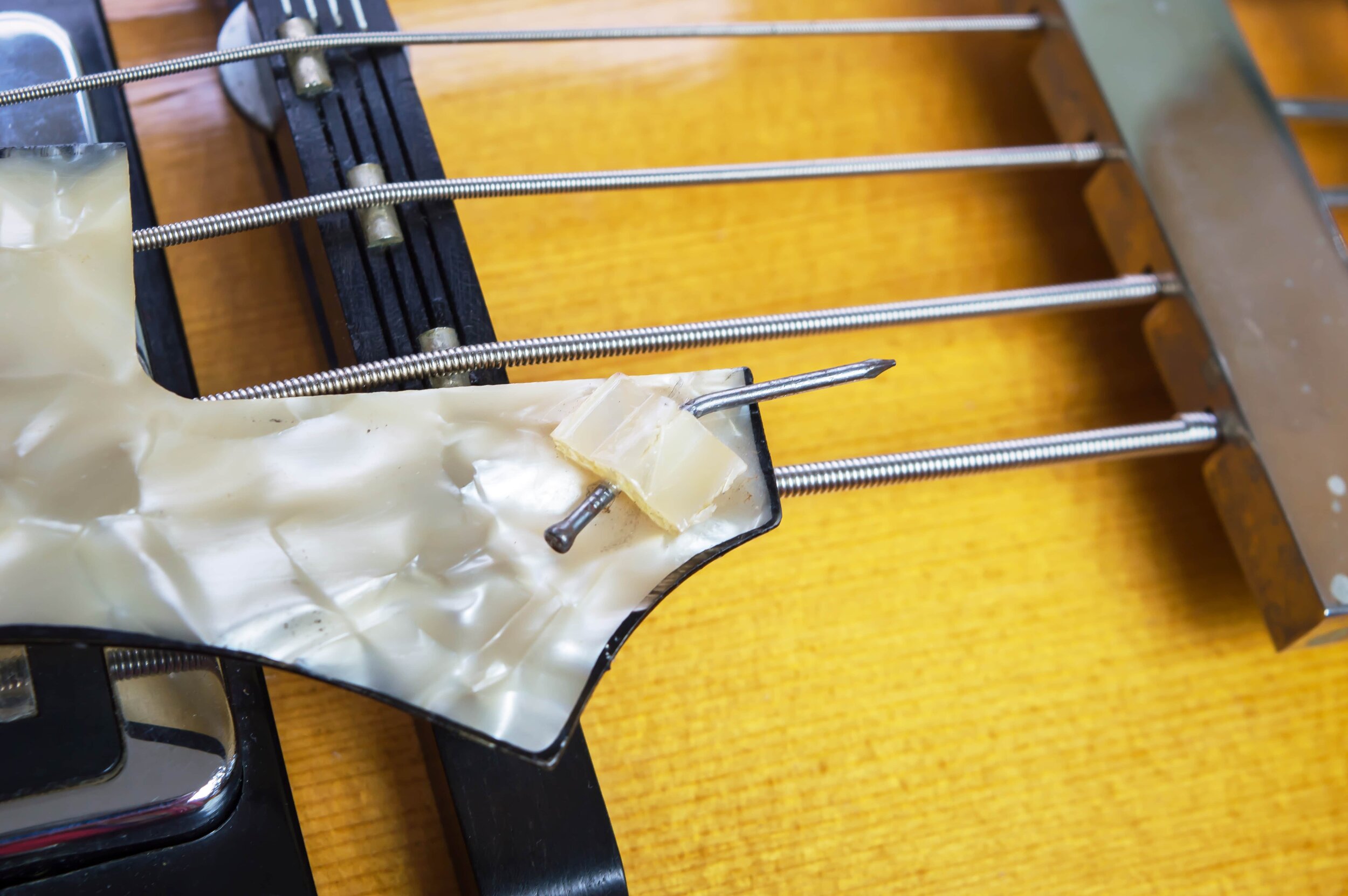
This crooked nail presses into a hole drilled into the side of the bridge base to secure the pickguard.
The finished guitar!
I’m enthralled by the instantly recognisable 1960s bass tone. It’s incredibly woody, deep and very clear. The Höfner is also very easy to play – even for occasional bassists – and I’m sure the owner is going to have a lot of fun with this 500/1.


